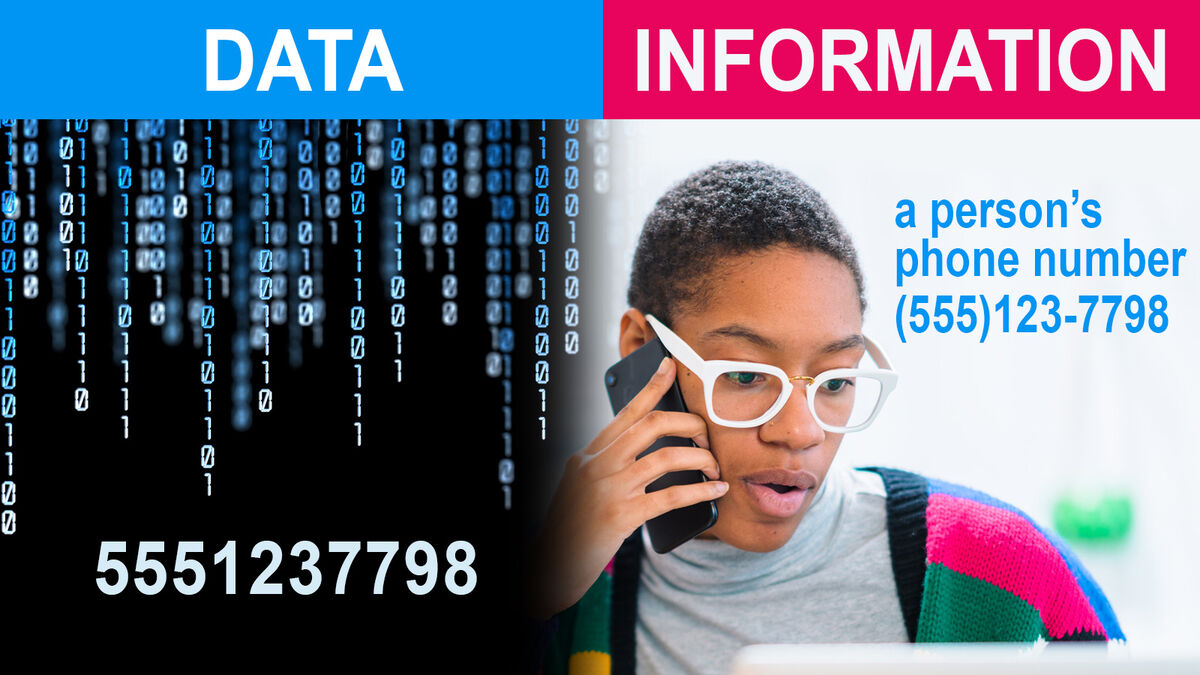
Data and information are similar concepts, but they are not the same thing. The main difference between data and information is that data is a part and information is the whole. Explore how data and information differ through definitions and examples.
What Is Data?
The term data is simply defined as “facts and figures”. Each piece of data is a little fact that doesn’t mean much on its own. The word data can be used for a singular fact or a collection of facts. It comes from the Latin word datum, meaning “something given”.
The word datum is still the technically correct singular form of data but is rarely used in common language.
What Is Information?
Information is defined simply as “news or knowledge received or given”. It is what results when you have processed, interpreted, and organized facts. The word comes from the Latin word īnfōrmātiō, meaning “formation or conception.”
Main Differences Between Data and Information
The terms data and information can mean different things in different contexts, but the main differences between them are:
- Data is a collection of facts. Information is how you understand those facts in context.
- Data is unorganized, while information is structured or organized.
- Information is an uncountable noun, while data is a mass noun.
- Data is not typically useful on its own, but information is.
- Data generally includes the raw forms of numbers, statements, and characters. Information doesn’t have to.
- Information depends on data.
Data vs. Information in Computers
In the world of computers, data is the input, or what you tell the computer to do or save. Information is the output, or how the computer interprets your data and shows you the requested action or directive.
Data vs. Information in Statistics
In the world of statistics, data is still defined as raw information, but the term statistics is often used in place of information. The statistics interpret and summarize the data.
Data vs. Information in Business and Healthcare
In the world of business, data are often raw numbers and information is a collection of individual data points that you use to understand what you’ve measured.
Data vs. Information Examples Chart
Seeing examples of data and information side-by-side in a chart can help you better understand the differences between the two terms.
Data | Information |
each individual homework and test grade of a student in one class | the student’s average grade for each class |
typing the words “cat videos” in your computer search engine (input) | the list of search results that includes a variety of cat videos on the internet (output) |
5551237798 | a person’s phone number (555)123-7798 |
100, 212, 0, 32 | the freezing and boiling points of water in Fahrenheit and Celsius |
What Do You Know?
Data typically comes before information, but it’s hard to say which is more useful. For example, if the information was processed or organized in a biased manner or incorrectly, it’s not useful, but the data still is. Continue exploring data and information by learning the differences between a hypothesis and a prediction or a hypothesis and a theory. Then, explore the differences between being objective vs. subjective.